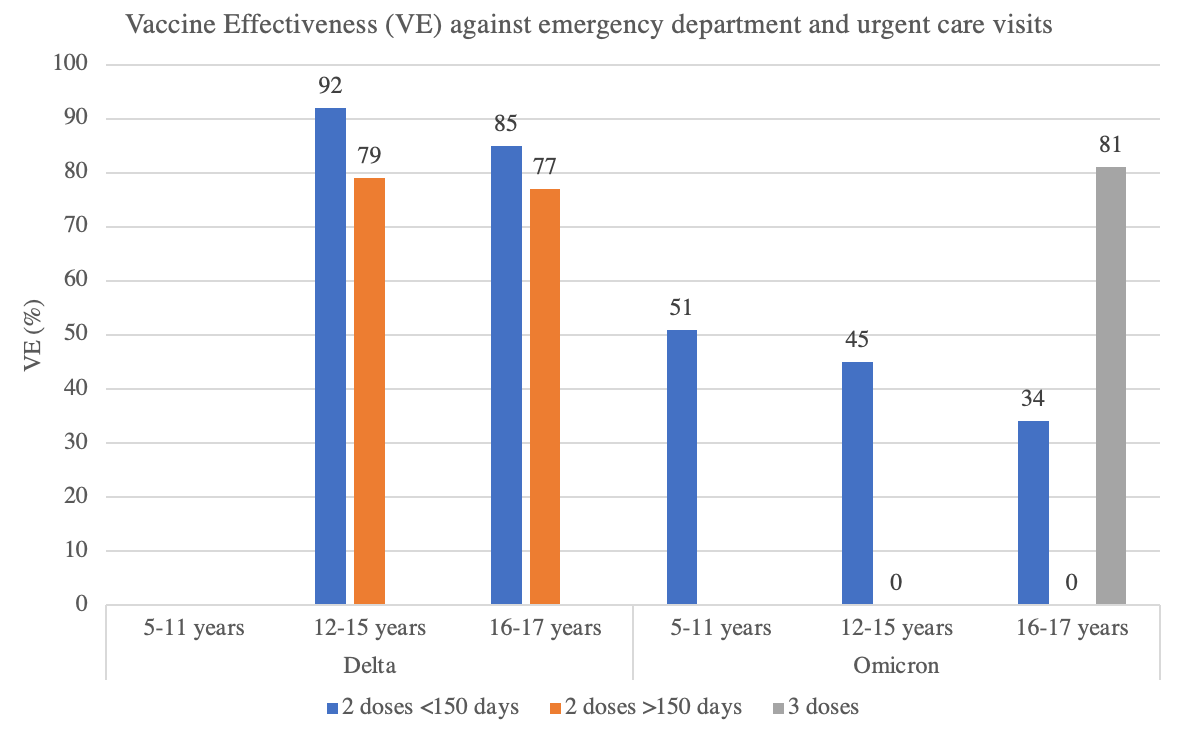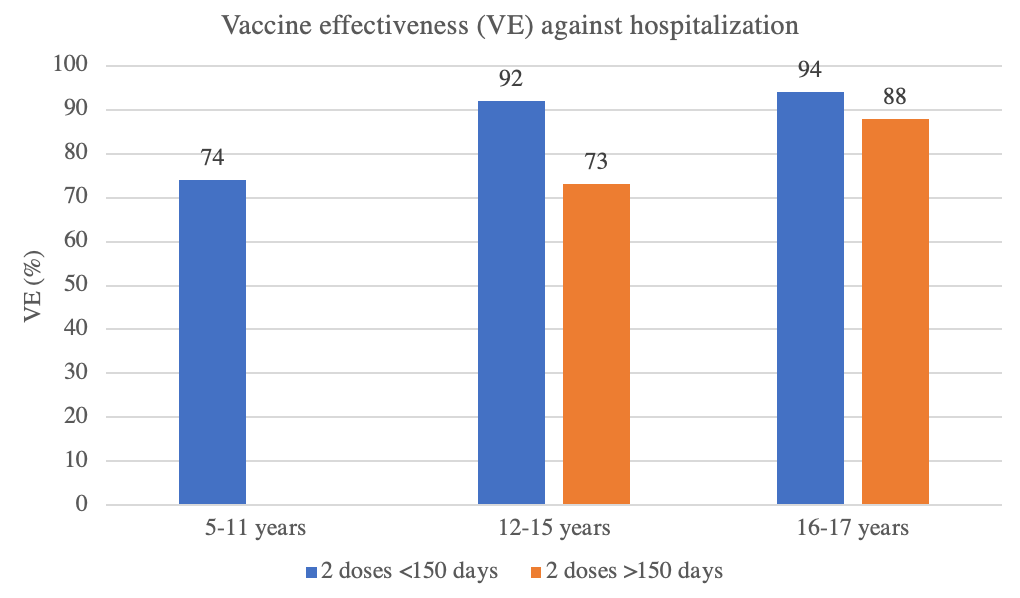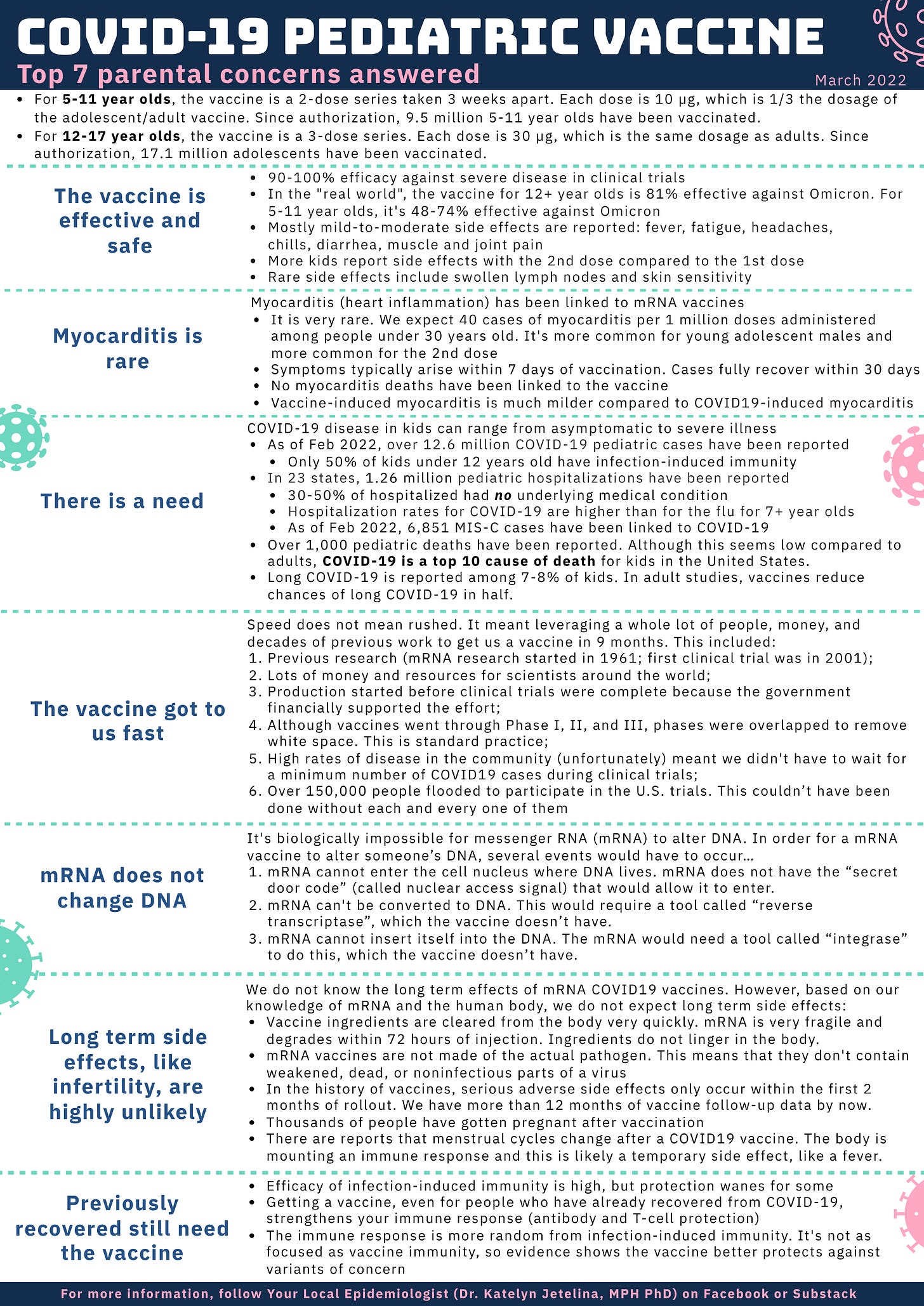Next week I will be writing a mini-series on long COVID19: What is the prevalence? Who is more likely to get it? What is the impact on organ systems? Is there any evidenced-based treatment yet? If you have specific questions about long COVID19 please submit them here. (Comments are open to everyone; not just paid subscribers).
This week headlines were peppered with contradicting news about the pediatric COVID19 vaccines. This post dives into the new evidence that emerged this week and what it all means.
New scientific evidence
While rigorous clinical trials were conducted, “real world” evidence is incredibly important to assess the durability of vaccines in light of new variants and over time. This is especially important among the 5-11 year old group because they were given 1/3 the dosage of adolescents/adults and we haven’t yet seen how that dosage holds up. This week two studies were released.
The first was a brief preprint released from scientists at New York State Department of Health and Albany School of Public Health. They linked three New York databases to assess COVID19 outcomes across vaccination status among among 5-17 year olds from December 2021 to January 2022 (i.e., during the Omicron wave). What did they find?
Vaccine effectiveness (VE) against infection significantly waned over time.
Waning started 28 days after the completion of the primary series
Waning was significantly faster for 5-11 year olds (68% → 12%) compared to 12-17 year olds (61% →51%)
VE against hospitalization also waned: 5-11 year olds (100% → 48%); 12-17 year olds (85% →73%).
While we expect vaccine protection against infection to wane—especially with Omicron, which can partially escape immunity—we need to ensure the vaccine still protects against hospitalizations. It clearly does for 12-17 year olds.
The VE against hospitalization for 5-11 year olds (48%) looks scary in this study. But, these events were really rare (only 35 total hospitalizations among vaccinated 5-11 year olds). Because of this, the study has statistically low confidence that 48% is the “true” VE. In fact, the study showed that the “true” number lands somewhere between 0 and 75%. So, we need much more data to confidently assess the presence (or absence) of waning against hospitalizations.
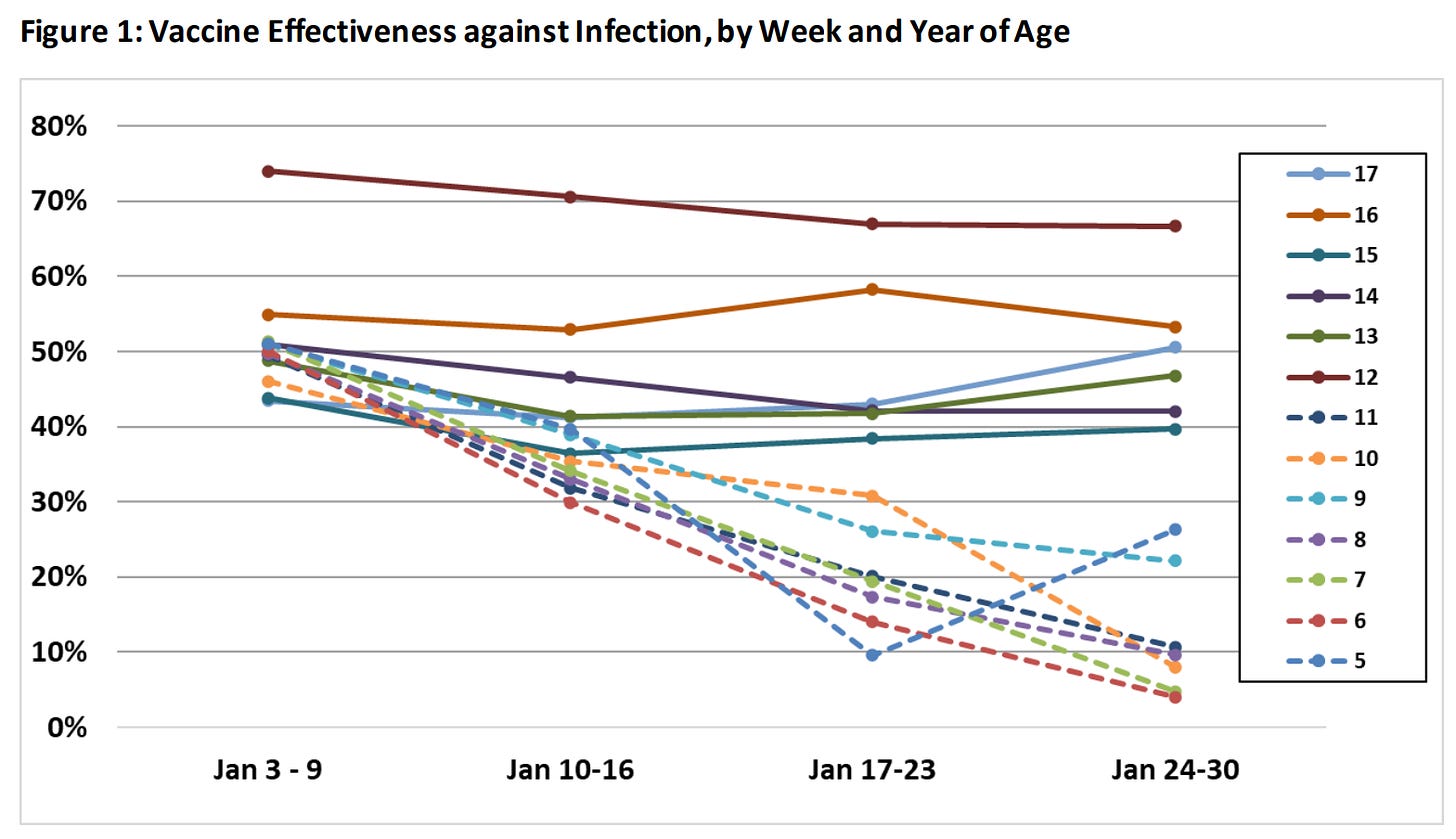
A second study was released a day later from the CDC and published in their Morbidity and Mortality Weekly Report (MMWR). In this study, scientists examined 39,217 emergency department (ED) and urgent care (UC) encounters and 1,699 hospitalizations among non-immunocompromised children aged 5–17 years. Data came from 10 states across a longer time period: April 9, 2021–January 29, 2022. Like the first study, the purpose was to assess VE over time and in light of different variants. What did they find?
There were a lot of numbers in this report, so I put together the figures below to help sort out the story. The first figure displays VE against ED and UC visits:
Delta: VE was very high but slightly decreased over time
Omicron: VE was suboptimal and significantly decreased over time
Among those that got the 2-dose series <150 days ago, VE ranged from 34-51% (depending on age)
Among those that got the 2-dose series >150 days ago, VE was 0%
A third dose (grey bar) shot effectiveness up to 81%.
The second figure shows VE against hospitalization. While protection waned slightly over time, it was still high. In this study, there wasn’t enough time to assess waning for 5-11 year olds >150 days after the primary series.
What do these studies mean?
Given the totality of evidence, I had five reactions:
Waning is not surprising. We have known for months that Omicron partially escapes protection and, because of that, effectiveness is reduced. Antibodies also wane with time, regardless of the variant. So reduced VE is expected, especially if we combine time and Omicron.
Vaccine dosage matters. What was surprising is how quickly VE waned among 5-11 year olds compared to 12+ year olds. This suggests that dosage could matter a lot. In fact, it confirms results from an August 2021 primate study that showed that dosage significantly predicted upper and lower airway viral replication in monkeys: the higher the dosage, the lower replication. (Interestingly, the authors of this primate study created the Moderna vaccine, which may explain why Moderna went with the higher dosage approach, compared to Pfizer, which went with a lower dosage approach in their vaccines.)
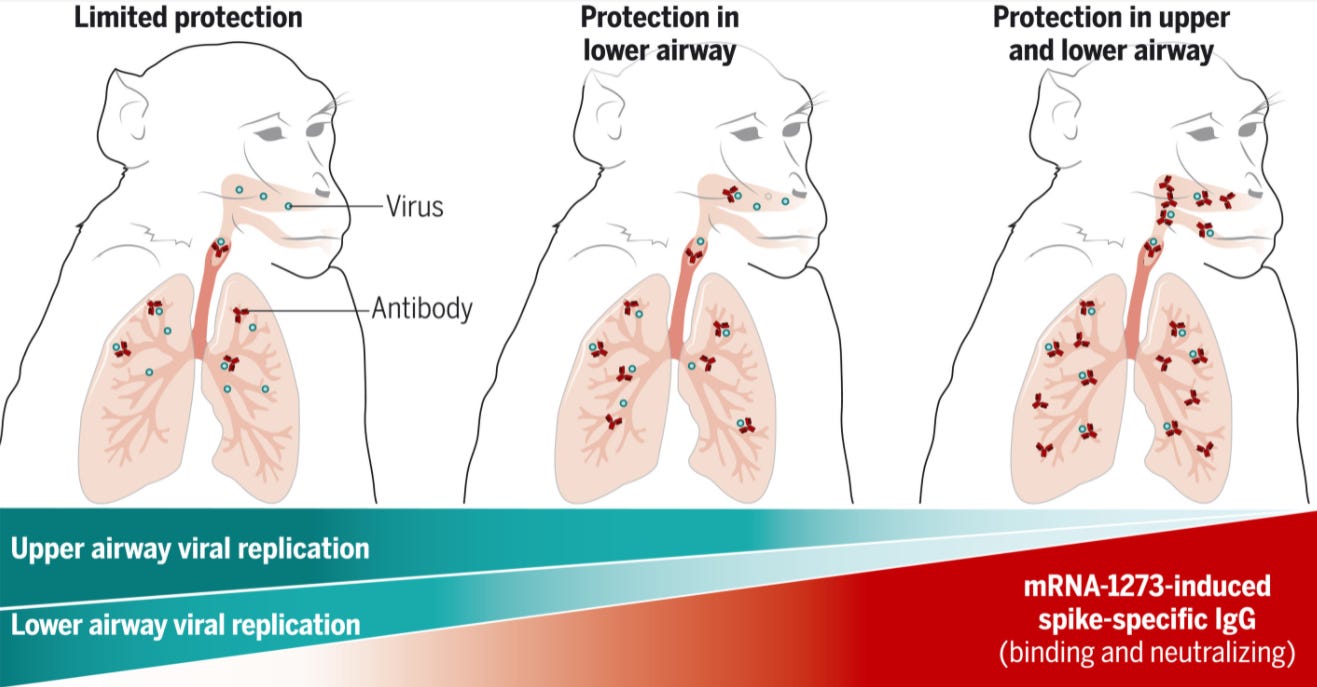
Boosters are incredibly important. Just like we saw with adults, boosters are essential for preventing infection. Among 16 to 17 year olds, VE jumped from 0% with the two-dose series to 81% with the three dose series. This is because boosters not only increase the number of antibodies, but also play a critical role with B-cells (our antibody factories, which can adjust to variants of concern). The FDA authorized the vaccine for 5-11 year olds on October 29, so I would expect conversations about their booster to be coming soon.
We need more data. The primary purpose of vaccines is to prevent severe disease and death. For 12+ year olds, the vaccines continue to work great against hospitalizations. For 5-11 year olds, this story is a bit muddled because hospitalizations are rare (which is good news) and we are at the mercy of time to see waning. More data is greatly needed, but for now it looks like VE against hospitalization is holding up.
Vaccines are still very important. There are many reasons to get your child vaccinated, and the benefits continue to outweigh the risks. Last fall, I created the document below addressing the top parental concerns. I updated this to reflect the most recent data. (The PDF download is at the end of this post).
Bottom line
Vaccines are still working, but they took a hit with Omicron. The vaccines for 5-11 year olds may have taken a bigger hit due to the dosage. VE will be critical to follow as more data (and time) pour in.
Love, YLE
If you would like a PDF of the updated version COVID-19 Pediatric Vaccine sheet, you can download it here:






